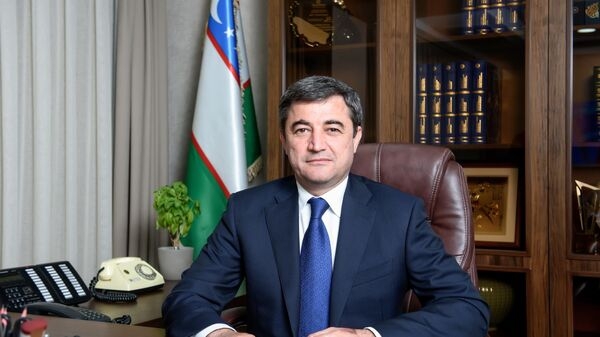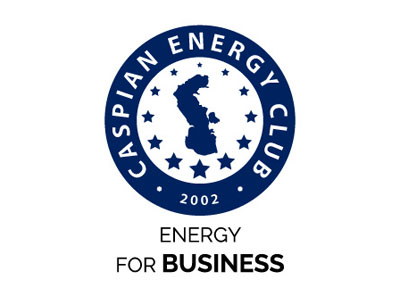Caspian Energy (CE): Mr. Sultanov, which countries are the main partners in Uzbekistan’s energy projects today?
Alisher Sultanov, Minister of Energy of the Republic of Uzbekistan: Historically, Uzbekistan has always been at the crossroads of civilizations, and the present is no exception. It is clear that any country with rich natural resources and potential attracts the attention of investors from many countries. We keep our options pretty open when choosing investment partners, and work actively in many different streams. The main principle here is that we do not choose countries or companies, but we make a choice in favor of competitive and mutually beneficial proposals coming from highly qualified international investors.
Projects are successfully underway jointly with foreign large companies in the oil and gas industry and concern mainly geological exploration, production and advanced processing of hydrocarbons.
Speaking about cooperation in the field of generation of both conventional and renewable energy, here we are also working with the leaders of this industry.
Companies from the Saudi Arabia Kingdom and UAE have submitted us very interesting proposals for the development of power plants, be it photovoltaic, wind and thermal power plants.
Moreover, the work is already underway on four tenders to select investors for photovoltaic, wind and combined-cycle power plant projects. And we see active engagement of companies from India, Korea, China and Western Europe.
The implementation of projects employ both own funds and resources of organizations and financial institutions with the aim to provide technical and logistical know-how, and in this way to achieve maximum efficiency in each project.
It is clear that along with existing partners, the Ministry of Energy of the Republic of Uzbekistan is constantly working to attract new internationally recognized companies and financial institutions.
CE: How investment-attractive is the upstream sector of Uzbekistan in the current low-liquid positions of this sector on the investment markets?
Alisher Sultanov: In Uzbekistan the work of this segment consists chiefly of searching and developing new hydrocarbon reserves.
For obvious reasons, the upstream sector is usually characterized by increased complexity of managerial decisions due to the fact that its scale and capital expenditures significantly exceed many other segments of the energy sector.
It is obvious that a long-term exploitation of a field and depletion of under-development reserves increase production cost as well, because it is necessary to additionally invest in new technologies and methods of production and transportation. Therefore, oil and gas companies operating in the republic are also interested in finding new hydrocarbon reserves.
Three (Ustyurt, Ferghana and Surkhandarya) out of five main oil and gas regions of Uzbekistan are considered very promising for oil and gas companies.
There is a very significant uncertainty in the world oil prices behavior due to the influence of a number of difficult-to-predict factors that lie both on the side of demand and supply. Who, for example, could have foreseen the coronovirus pandemic and its impact on the global economy?
Opportunities for further development of the oil and gas sector in Uzbekistan will largely depend on the level of world oil and gas prices. Thus, the opportunities to pull new fields and unconventional reserves into the development will be significantly limited in the conditions of low oil prices, as investments in higher-cost projects may become economically inefficient.
Nevertheless, I believe that our policy aimed at gaining maximum benefits through our own processing of crude and production of value-added products will make it possible to maintain investors’ interest in the field of geological exploration and the development of new fields.
CE: Are there plans to open an electric vehicle manufacturing plant in Uzbekistan?
Alisher Sultanov: Yes. In particular, it is covered by the Cabinet Ministers’ decree “On additional measures to support the rent of motor vehicles, as well as expand the use of electric vehicles, motor transport and bicycles for movement around the country” dated December 29, 2020. The Government of the Republic of Uzbekistan plans to launch the production of electric vehicles at the existing facilities of Uzavtosanoat JSC. It also provides for the involvement of foreign experts and consulting companies to develop a concept for shifting to the production of passenger cars and motor vehicles running on electric engines.
This decree has cancelled the tax on the purchase of electric vehicles within the country and their temporary importation, which was usually paid when registering a vehicle in the bodies of the Ministry of Internal Affairs.
It is important to emphasize that no excise taxes or customs duties are currently imposed in our country on the import of electric vehicles.
CE: Do you consider the possibility of building electrolyzer plants for hydrogen production, given the availability of gas resources?
Alisher Sultanov: The possibility of using hydrogen for energy purposes has long been known. However, extensive researches were resumed as more countries began striving for sustainable development of the energy sector, and the economy as a whole.
Researches aimed at developing hydrogen energy have already been started in Uzbekistan, but it is too early to talk about the use of a particular technology.
We believe that the use of hydrogen energy has great prospects. As the Executive Director of the International Energy Agency Fatih Birol stated: “I have never seen a single technology that enjoys such universal support from all governments.”
A striking example of this is the recently adopted Presidential decree “On measures for the development of renewable and hydrogen energy in the Republic of Uzbekistan”.
However, construction of the hydrogen energy infrastructure is not a one-day event. A comprehensive approach is needed here. Building of this infrastructure, as well as renewable energy source facilities, requires systematic scientific-practical research and building of financial models that determine the effectiveness of these measures both for the environment and for the country’s economy.
For this purpose, according to the decree, the National Scientific Research Institute of Renewable Energy Sources is being established under the Ministry of Energy of the Republic of Uzbekistan.
A research and development centre for hydrogen energy and a laboratory for testing and certifying renewable and hydrogen energy technologies will be established within this Institute.
Among the main tasks and activities of the Institute noteworthy are:
• implementation of scientific and practical research and development of innovative projects for the development of hydrogen energy and renewable energy sources;
• analysis of current global trends in the development of these areas;
• achievement of technological leadership in the region in terms of creation and implementation of “know-how” infrastructure in the field of hydrogen energy and others fields.
In addition, an open agreement on the development of renewable and hydrogen energy in the Republic of Uzbekistan was signed between the Ministry of Energy, Saudi Arabian company and the US company.
CE: How is it going with the development of solar energy sector?
Alisher Sultanov: The answer to this good question can be too long. In short, things are going well.
The reduction of solar radiation is not expected in the coming decades! So, we can firmly count on the main source of energy in this case. We can also count on the energy of our leaders, scientists, specialists and workers who have taken this rather new direction with interest and enthusiasm.
Today, significant investments are already being made in solar and wind technologies in Uzbekistan. The Ministry of Energy is working to establish a National Scientific-Research Institute for Renewable Energy Sources.
Drawing on the scientific potential, we plan to increase the share of electricity production from renewable energy sources to 25% by 2030. These energy capacities will include 5 GW of solar energy, 3.8 GW of hydropower and up to 3 GW of wind energy.
To achieve this goal, we have signed agreements with the International Finance Corporation (Member of the World Bank Group) and the Asian Development Bank to hold tenders for the projects regarding the development of generating capacities of up to 1 GW.
In 2020, tenders were announced for the construction of three more photovoltaic plants with a capacity of 200 MW each – in Surkhandarya, Samarkand and Jizzakh regions of Uzbekistan. In general, more than 80 companies responded to the tenders and it tells about increased interest of investors in these projects.
To date, we have completed 3 tenders for a total capacity of 900 MW, in which we determined the winner investor-developer and the electricity tariff. I would like to note that the received tariffs surprised not only us, but I’d go as far as saying that the whole world community also. Presented tariffs were one of the lowest ones, around 1.8 cents per 1 kW-hr. We received a tariff of 2.697 US cents per 1 kW-hr energy at the first international tender held in 2019. The international community was pleasantly surprised by this proposal at that time.
For the first time in the history of the country’s energy sector, projects on the construction of solar power plants have been implemented dynamically since 2019. Some of these projects will be completed and commissioned as early as this year. Thus, the company from UAE is building a solar photo power plant with a capacity of 100 MW in Navoi region, which will start supplying electricity to the national grid this year. This photovoltaic power plant will produce 250 GWh per year of electricity from solar energy sources, which is enough to power more than 90,000 households and prevent 70 million metric tons of greenhouse gas emissions per year.
Another photovoltaic power plant with the capacity of 100MW will also be launched in 2021 in Samarkand region.
Projects on construction of wind power plants are also developing steadily. Agreements were signed with the Saudi Arabian company on the construction of a power plant with a total capacity of 1000 MW in Bukhara region. Moreover, the company from UAE is not only implementing the first wind power project in Navoi region, but also signed an agreement on April 1, 2021, providing for the increase of this project’s potential capacity up to 1.5 GW. This will make it the largest in Central Asia.
Companies from UAE, France and Saudi Arabia are among those investing into the sector of renewable energy sources. At the same time, 50-80 investors participate in each tender for renewable energy projects.
These are concrete steps to reduce the country’s dependence on CO2-emitting fuels. A roadmap on shifting to low-carbon energy has been developed for the electric energy sector of Uzbekistan with the support of the European Bank for Reconstruction and Development (EBRD). And we are now working on a plan that will ultimately make our lives more comfortable, our air cleaner, and our future more reliable.
CE: How efficient is gas export to China?
Alisher Sultanov: Gas export to China is only one of the lines of cooperation between Uzbekistan and China in the energy sector. The Subcommittee on energy cooperation of the Uzbek-Chinese Intergovernmental Cooperation Committee held its sixth meeting on April 27, 2021.
At the same time, Chinese companies were invited by the Uzbek side to participate in various projects on development of the electric power infrastructure of Uzbekistan, including the construction of new and modernization of existing power grid facilities.
China is a country with developed technologies, natural and labor resources, and in many respects with an already realized economic potential - it remains our partner in many areas of the economy.
Thank you for the interview





